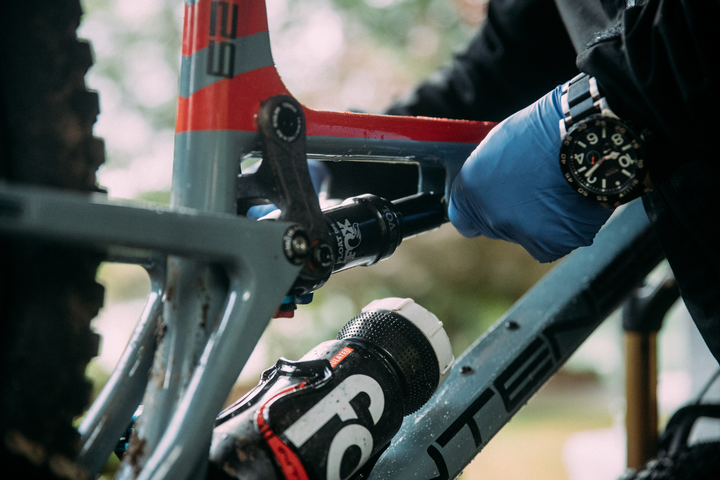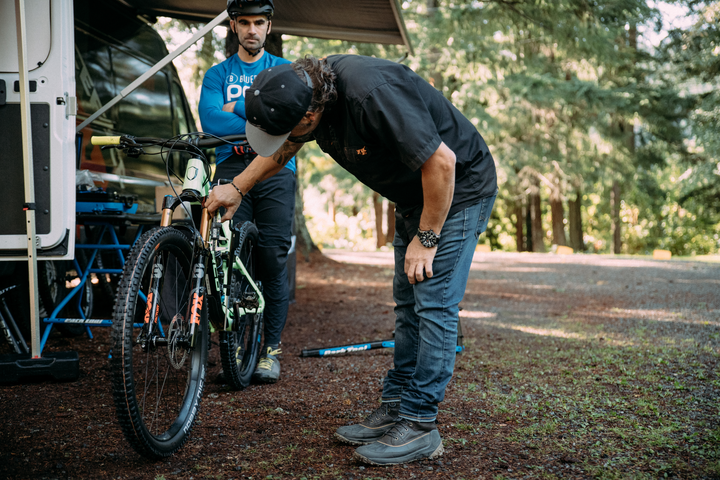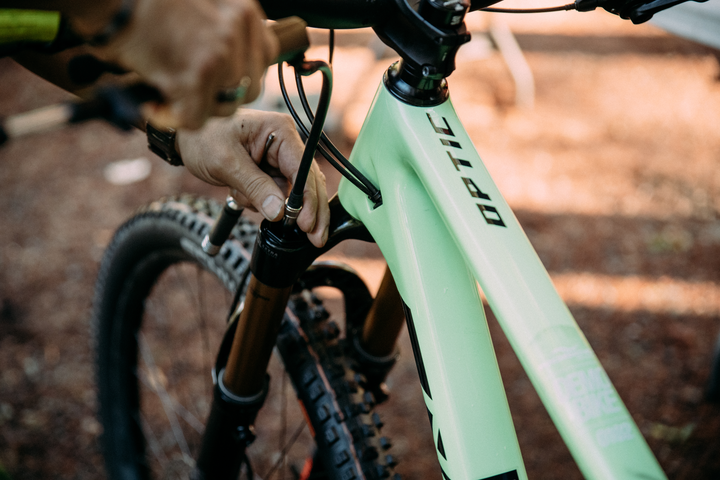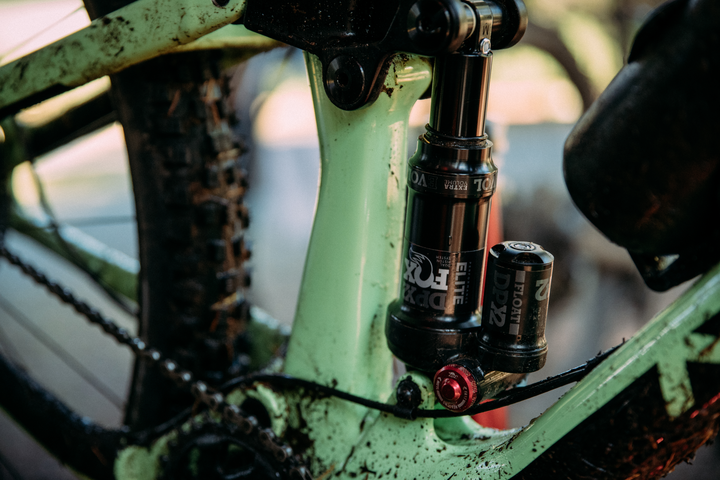How to avoid the three most common suspension setup mistakes
Fox's OEM suspension technician shares and solves the most common errors
 Photo by:
Nicholas Kupiak
Photo by:
Nicholas Kupiak
While modern mountain bike suspension is better than it has ever been, setting it up properly isn’t always easy. With so many dials and valves, it can be hard to know where to start and what order to twist which knob in to find the perfect settings.
Last fall, I had the chance to attend a Fox tuning camp. While I was sidelined with a broken thumb, I still learned a ton about what goes into getting a bike’s stock suspension dialed in before it even leaves the factory.

Fox’s OEM Suspension Technician, Naz Evangelista was on hand helping several bike manufacturers learn the ins and outs of the brand’s newest forks and shocks. I asked Evangelista, who has decades of experience at the top levels of the sport, about some of the most common suspension setup mistakes he sees riders making. And, more importantly, how to avoid making them in the first place.
Common Suspension Mistakes (and how to avoid making them)

Set sag first
Not setting your sag first is one of the most common mistakes. Changing the air pressure in a fork or shock affects all the other settings. Setting up sag properly should always be step number one. Part two of this is that if you change your air pressure later you have to adjust the other settings to match, since all those settings are relative to the air spring rate (pressure).

Too much compression damping
We all like our suspension to feel supportive, especially when we’re looking up the hill at a big climb. But using too much compression damping (not “dampening” Naz reminds me) can mean you’re not using your suspension’s full potential. Too much compression damping can mean you’re not getting full travel out of your fork or shock, or not getting as smooth a ride over rough trails as you could be.

Not following user guides
Every rider has personal preferences when it comes to suspension feel but, even before your bike arrives at the shop, companies have already done a ton of work to make your suspension better. Evangelista works directly with Product Managers to dial in tuning on each shock and fork for brands before their bikes are released. Fox works with brands to set baseline tunes for each individual bike model. That means even if two different bikes are running the same shock, there are key differences hiding inside that make that shock work best for each frame. Some brands, like Rocky Mountain, go so far as to develop size-specific shock tunes. While we were in Nanaimo, Evangelista switched up the internals on yet-to-be released test bikes several times, going back and forth with product developers to make the base shock tune work perfectly.
After seeing how much time Fox and these brands put into getting a shock ready for the real world, it makes perfect sense to listen to a company’s guidelines for how to best set up that shock. Of course, you need to make minor adjustments to suit your style. But those should, in most cases, be minor tunes.
Fox: Dialed Ep. 15 – Jordi’s Basic Suspension Setup
For the visual learners, Fox’s World Cup suspension Guru Jordi Cortes walks through a basic suspension setup, step by step.
